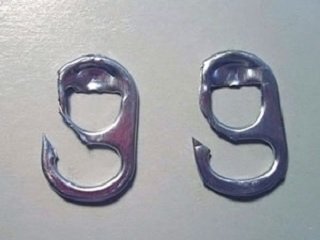 While it’s obviously never Plan A, finding yourself lost and stranded in the middle of the wilderness is a very real possibility for outdoorsmen, especially for those who venture into the backcountry. If you do become stranded near some type of water—a lake, river, creek, pond, bay, or the ocean—catching fish is a good way to satisfy your hunger and stay alive in a crisis. Almost all fish are edible and most are delicious and nutritious. Good sized waters are an abundant food source, since nearly all fish are edible and most are tasty and rich with vital nutrients to preserve your strength. What if you have no fishing tackle, though? Well, today we’ll take a look at how you can fashion rudimentary tackle to catch fish in a wilderness emergency.
While it’s obviously never Plan A, finding yourself lost and stranded in the middle of the wilderness is a very real possibility for outdoorsmen, especially for those who venture into the backcountry. If you do become stranded near some type of water—a lake, river, creek, pond, bay, or the ocean—catching fish is a good way to satisfy your hunger and stay alive in a crisis. Almost all fish are edible and most are delicious and nutritious. Good sized waters are an abundant food source, since nearly all fish are edible and most are tasty and rich with vital nutrients to preserve your strength. What if you have no fishing tackle, though? Well, today we’ll take a look at how you can fashion rudimentary tackle to catch fish in a wilderness emergency.
I’ll preface this article by advising all outdoorsmen to have a survival kit on hand at all times and stock it with an assortment fish hooks, lures, and line to be used in an emergency. You can never be too prepared.
Improvising is the key. You’ll need to use any materials available to you to create the fishing tackle you’ll need. If possible, try to have several devices in use all the time. That way, you attend to more important concerns while you’re fishing tools do the work.
Hooks can be made from a number of different materials, including needles, safety pins, nails, paper clips, thorns, earrings, or even the tab from a soda can. If you have a knife on hand (and any outdoorsman should), you also can whittle traditional hooks from wood, shells, or bones. I’ve even practiced with a gorge, or toggle, hook, which is a short, straight piece of hard material, such as bone, antler, or wood that has been sharpened at both ends and slightly notched in the middle where the line attaches. You then hide the gorge inside a piece of soft bait, so when a fish swallows the bait, you can pull the line, turning the gorge sideways and lodging it in the throat of the fish.
Line will be a little tougher to make, but it can be crafted from many materials that you might have on hand, such as clothing thread, pieces of wire, dental floss, sinew from the leg of a deer, twisted bark, or whatever else is available. To power the fish towards the shore, you can use a makeshift pole, or pull the line by hand. Any extra line should be used to create setlines that can work while you’re gathering firewood or building a shelter. You can attach the line to a stake in the bank, or to branches stretching over the water.
You’ll need to get over any nagging feelings regarding sportsmanship here. This isn’t a tournament or a morning on the water; it’s survival. You’ll need to use any method at your disposal to catch fish when it’s a matter of life or death. Also, don’t ignore smaller fish, which are usually more plentiful and more easily caught. Multitask and if you have the time and energy, implement more than just one instrument to catch the fish. Fashioning fishing tackle in a wilderness emergency may seem like an impossible task, especially when fear and panic threaten to set in, but it doesn’t take more than focus and patience, and it can save your life in a survival situation.








